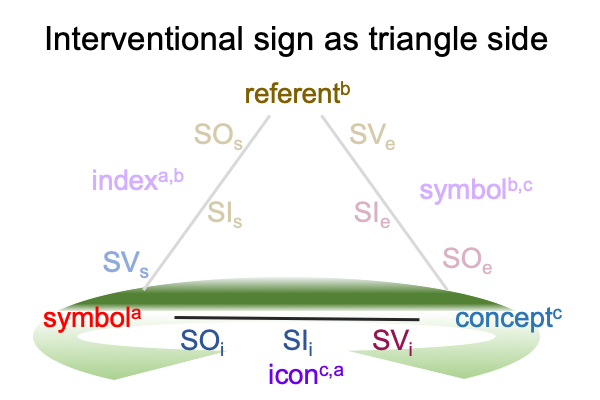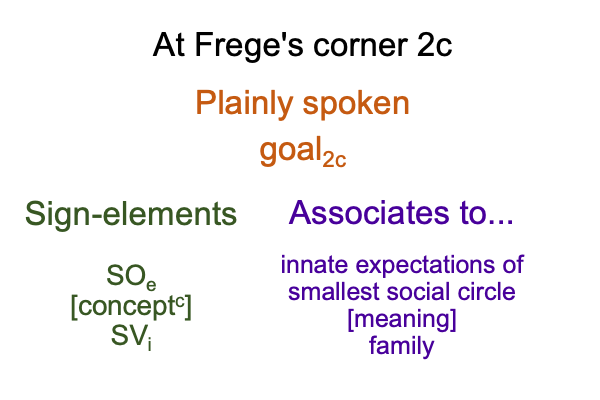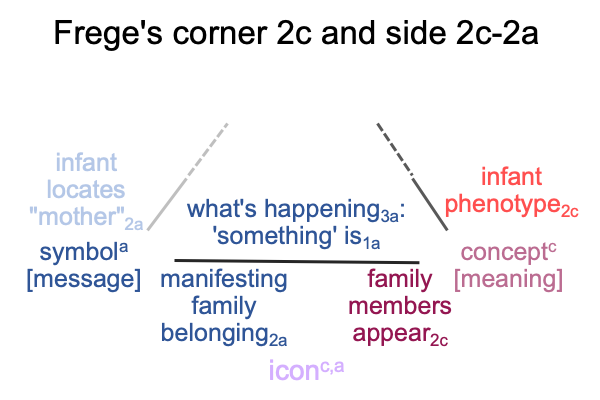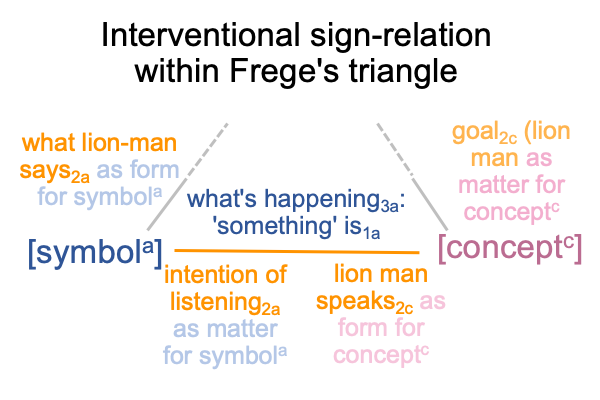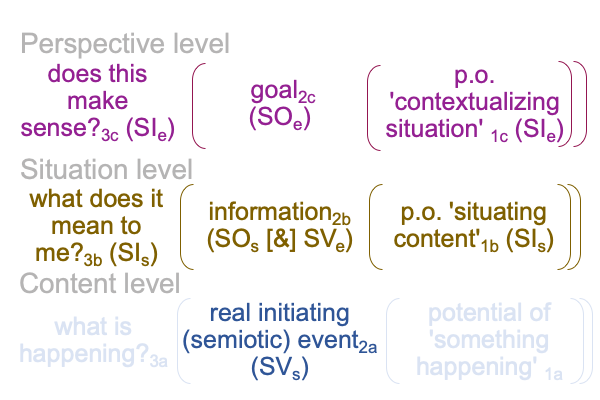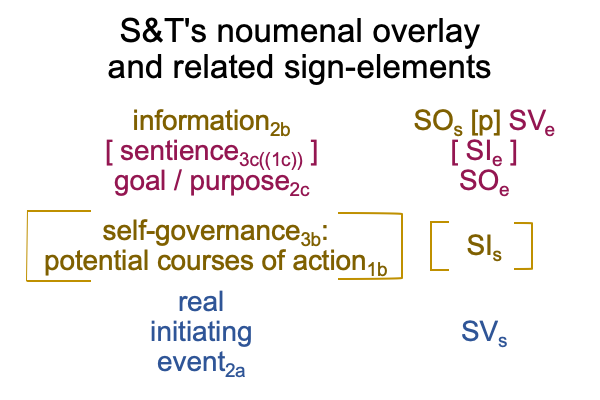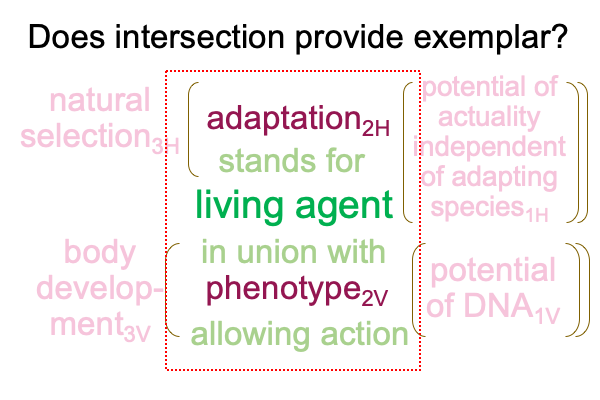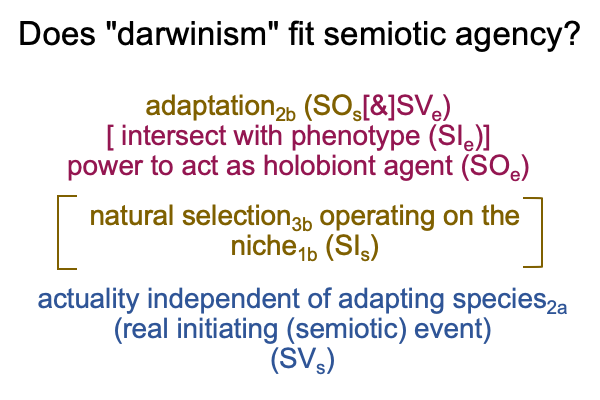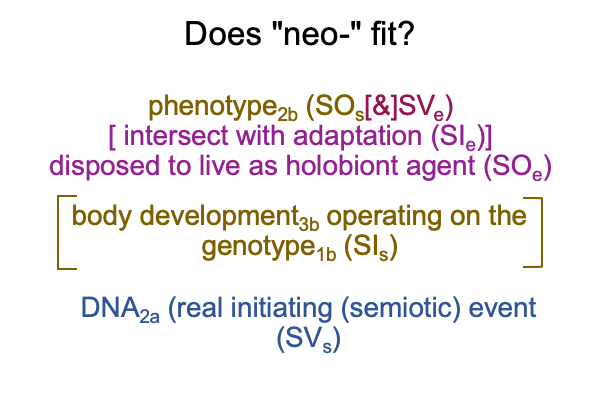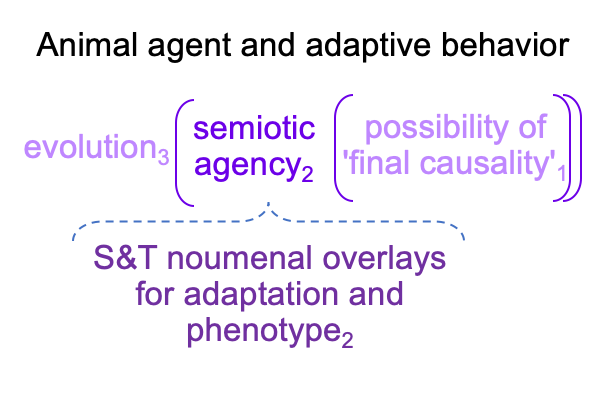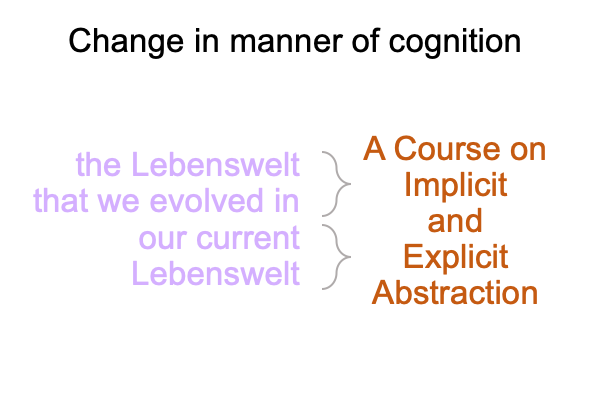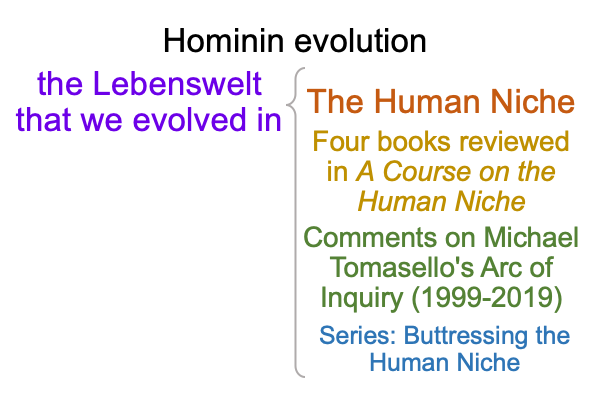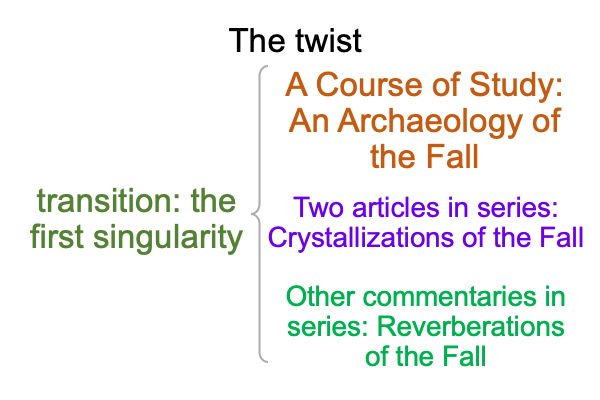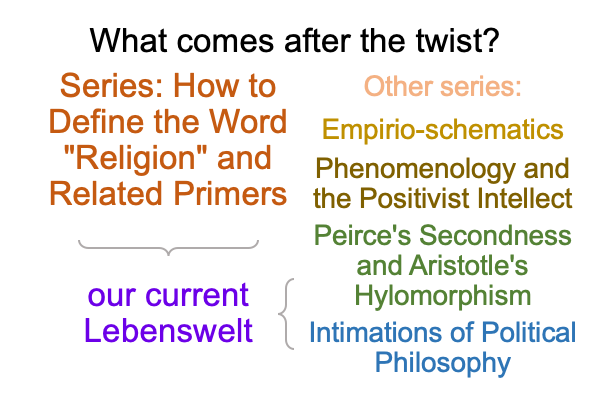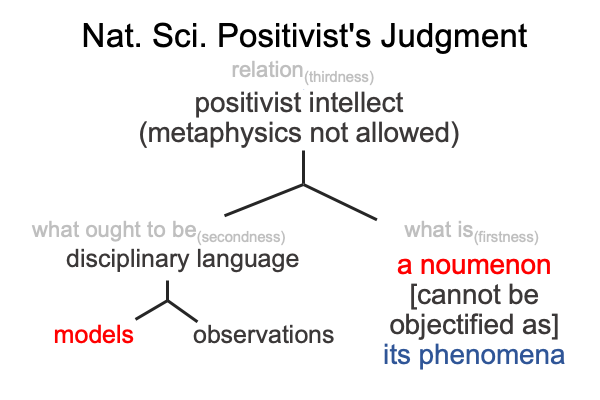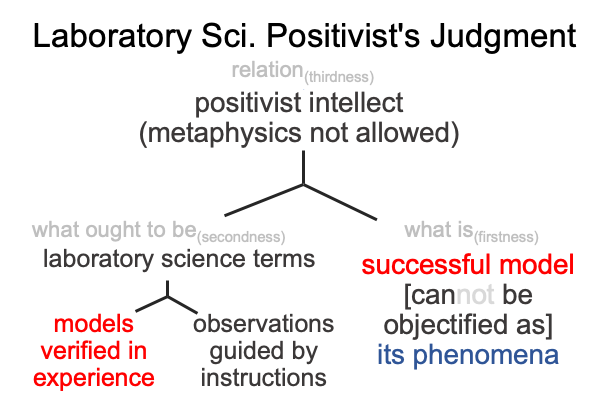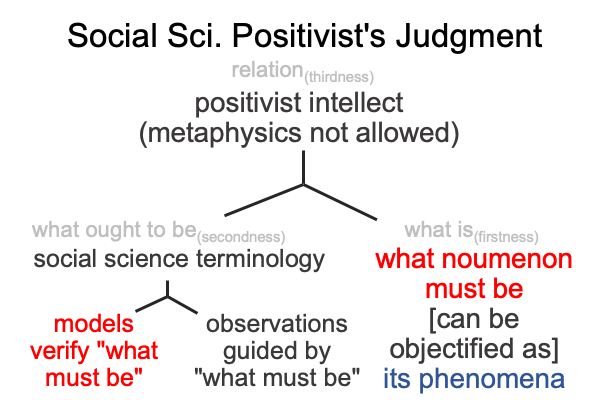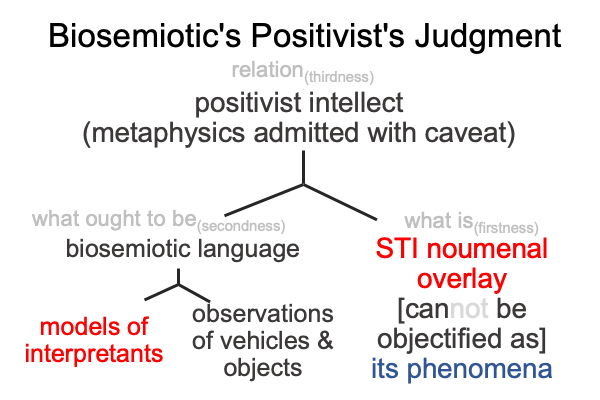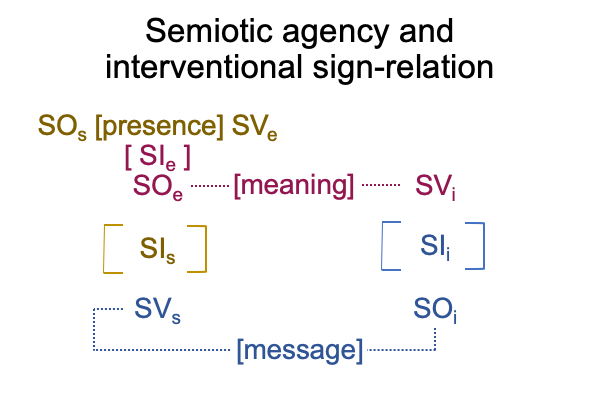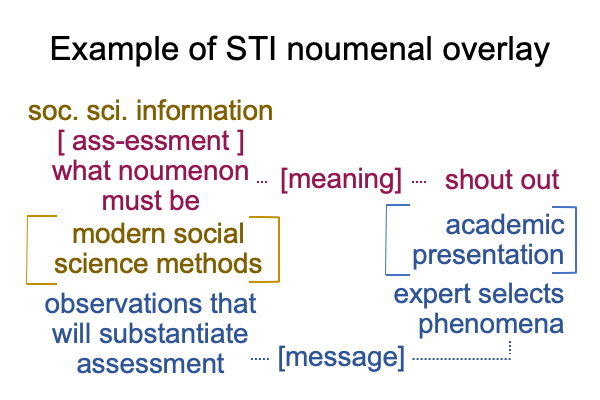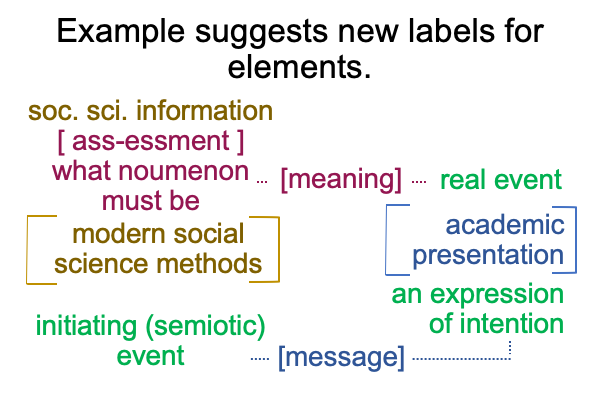Looking at George Mikhailovsky’s Chapter (2024) “Meanings, Their Hierarchy, and Evolution” (Part 9 of 9)
1137 The material that I cover in my portrayal of C1 and C2 using Frege’s triangle goes with section 6.3, titled “Potential Meanings During the Abiotic Period of the Evolution of the Universe”.
Here is a picture.
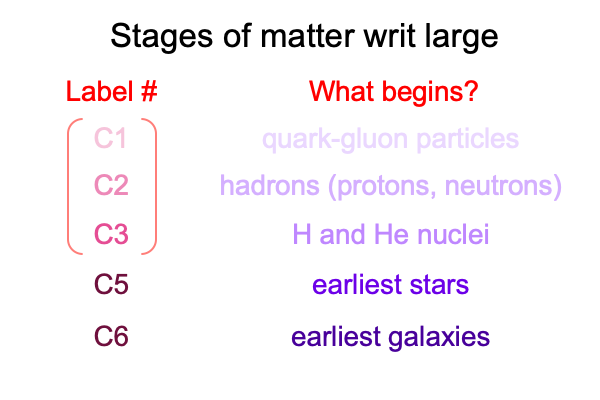
C4 (is missing because it) covers the genesis of atoms with masses greater than helium. Technically, C4 follows C5, as written above. Why? Atoms with masses greater than helium are produced by nuclear fusion in stars. The story bifurcates from the cosmic sequence to the substance sequence. The substance sequence starts with atoms with masses greater than helium and proceeds through the emergence of life.
1138 The Frege triangles for C1 and C2 are easy compared to what follows in section 6.4 (“Evolution of Meanings in Biological Systems”) and 6.5 (“The Evolution of Meanings in Human Societies and the Relationship between Hierarchies of Substance (that is, biology) and Semantics (that is, within our current Lebenswelt)”).
Nevertheless, my exercises demonstrate the utility of Frege’s triangle in the extension of the biosemiotic interscope into all aspects of postmodern inquiry, including into abiotic noumena, the domains of physics and chemistry.
1139 There are many threads to follow in this demonstration.
The first thread is obvious. Can this be done for all noumena listed in Table 6.2?
The answer is yes. Once one starts a spiral, other spirals follow, and they diverge, and they coalesce, and who knows what else.
1140 The starting point of the author’s cosmos chain (C1) is obviously the Big Bang.
But, one can say that other starting points can be imagined, hence theories of the multiverse. The multiverse consists of many universes, each with different energy, space, natural laws and constants. Physicists can simulate these many “universes”. Hollywood movie makers can fashion plotlines from the conceptc. It is all very theatrical, including the name for the start of our own universe, “the first singularity”.
1141 The starting point of the author’s substantial chain (S1) is atoms, made in stellar furnaces because (up to the atomic configuration of iron) fusing atoms releases a tremendous amount of energy, enough to keep a star from falling in on itself from gravity.
Anyone who has cracked a chemistry textbook knows that there is no “first singularity” to be found in this discipline. One can imagine that each element in the periodic table constitutes its own singularity. Spirals diverge and coalesce in the most fantastic ways, so there is no telling which molecules are the precursors to life and which are not.
1142 This is where Frege’s terms complement Peirce’s.
Frege’s terms serve as spoken labels. Labels are used for symbolic operations. Symbolic operations undergird grammar (that is, language). So, Frege’s terms point to the somewhat disturbing intimation that speech-alone talk (or a theoretical equivalent) is intercalated into semiotic agency and, by way of bridging, to significance that is outside of semiotic agency (that is, the interventional sign-relation).
Here is a picture.
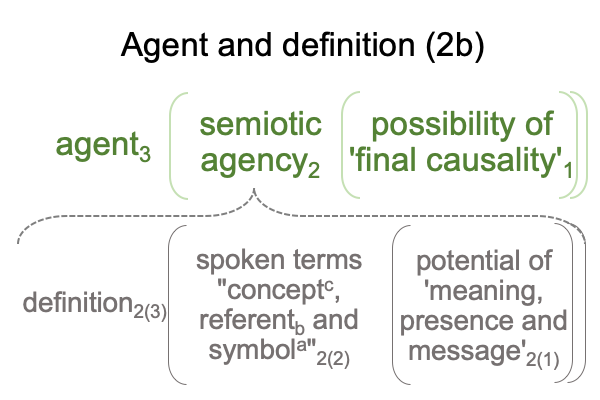
1143 Peirce’s terms also serve as spoken labels. These labels apply to the contiguities between real elements in the actualities of all interscopes. These labels apply to something like [substance], in a contiguity between something like matter and something like form. To a greater or lesser extent, all dyads in Peirce’s secondness pay tribute to Aristotle’s hylomorphe as an exemplar.
1144 The biosemiotic interscope reifies into the biosemiotic noumenal overlay, including both semiotic agency and the interventional sign-relation.
This chapter presents an impossible challenge. Spirals (or hierarchies) go back to the first singularity, thirteen billion years ago. Each spiral brings the inquirer to a new level. Some spirals write small, others write large, but they all begin … for us … with a clot. A pen touches paper, then moves to portray a diagram, a purely relational structure, portraying what all living things have in common.
1145 This examination recites all that has gone before.
This examination is a refutation to those who think that modern science knows enough to weave these spirals into a vision of our universe, as well as of us, the images of the one who speaks the universe into being.
1146 I say, “Diagram spirals!”
Perhaps, the author agrees and anticipates that Frege’s triangles will reveal a hierarchy… or is it?… a spirality that portrays meanings and their evolution.

